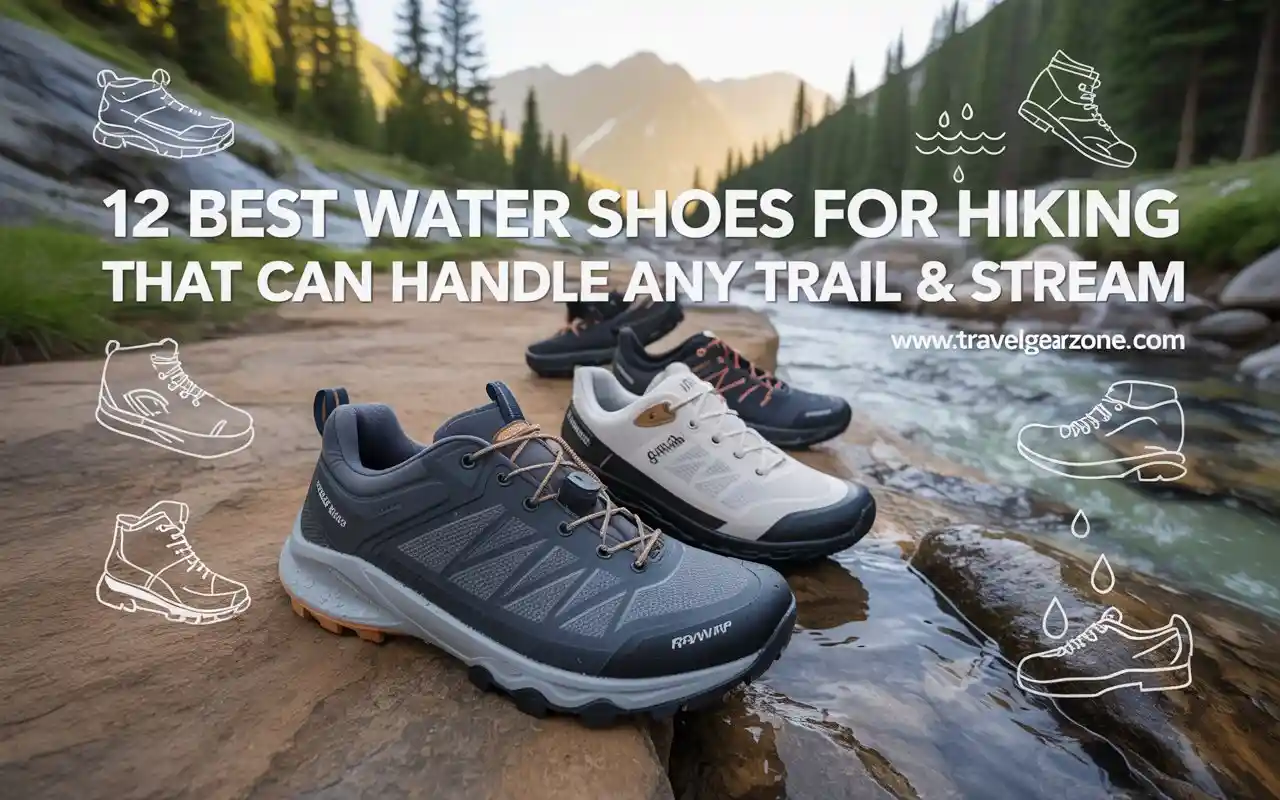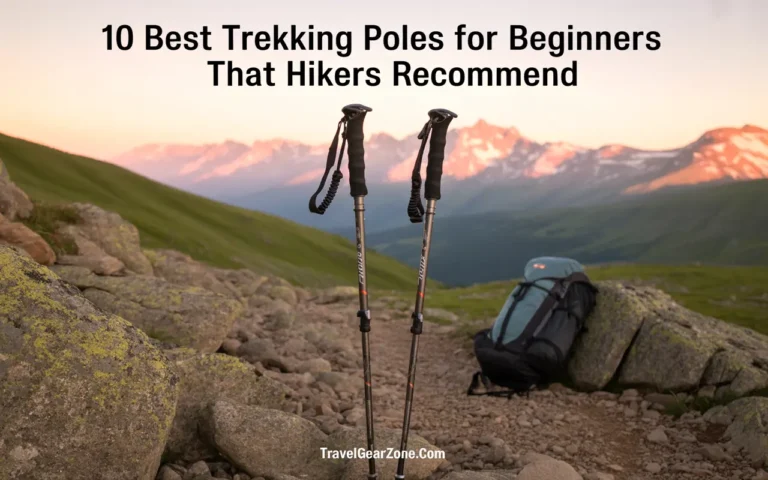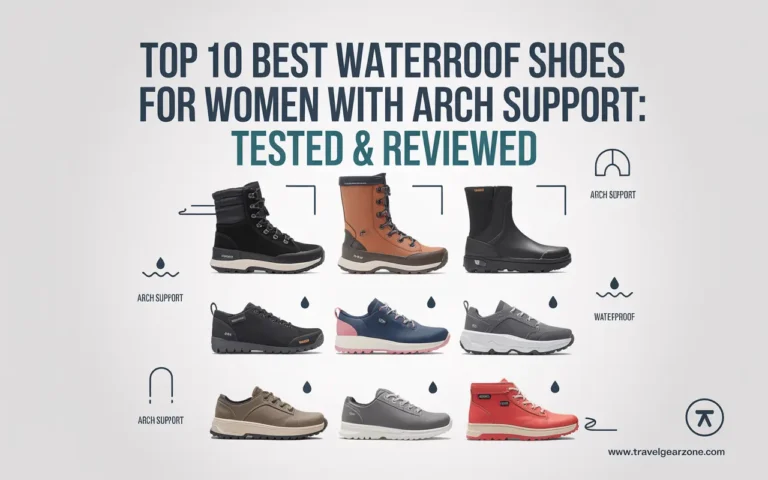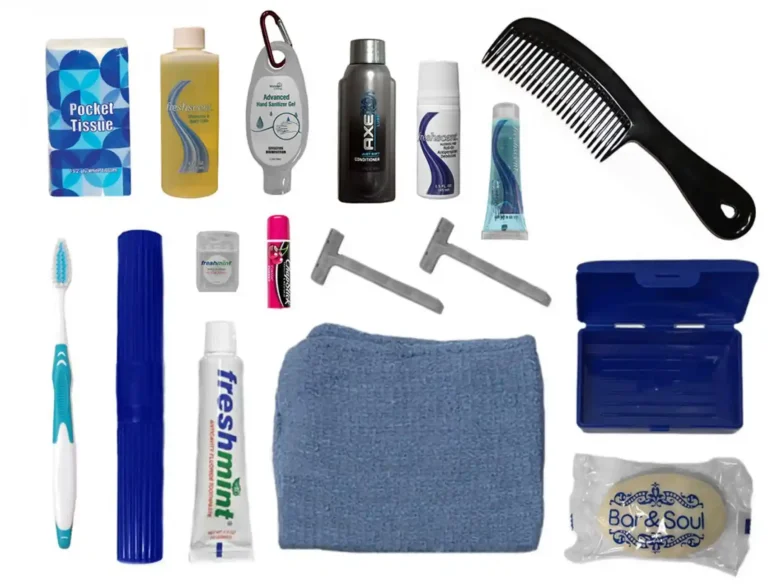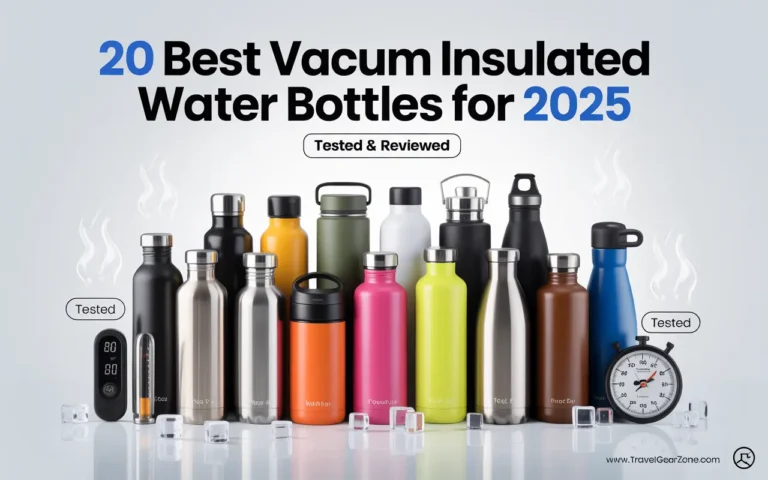12 Best Water Shoes for Hiking That Can Handle Any Trail & Stream
Picture this: You’re halfway up a waterfall trail, shoes soaked, gripping your trekking pole as you try not to skid on a slick rock. It’s not exactly the outdoor adventure you dreamed of… unless you’re wearing the best water shoes for hiking. Then? You’re probably steady, comfortable, and actually enjoying the splash.
A lot of folks assume regular hiking boots can handle it all. Dry trails, wet riverbeds, canyon crossings, beach hikes — but they can’t. Not when you’re navigating muddy slopes or hopping across slippery stones in the Virgin River. That’s where the best water shoes for hiking come in. They’re designed for these exact conditions — hybrid footwear built to drain fast, grip tight, and dry quickly.
So if you’ve ever wondered what to wear while exploring slot canyons in Utah or wading through Death Hollow or The Narrows… you’re not alone. This guide is all about finding the best water shoes for hiking, ones that hold up through rough terrain, rushing streams, and those spontaneous dips you didn’t plan for.
I. Why You Need Water Shoes for Hiking
a. What Are Water Hiking Shoes?
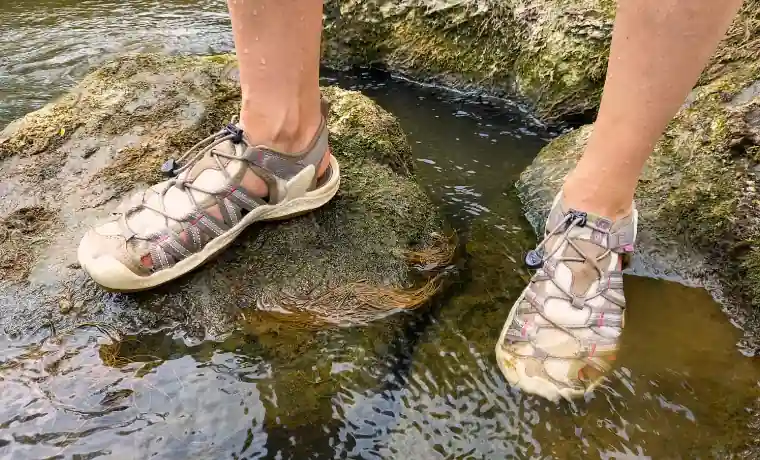
At first glance, water hiking shoes might seem like just another pair of trail runners or sandals. But they’re kind of… their own thing.
Not quite boots, not quite aqua shoes. The best women’s hiking water shoes and men’s versions are built with specific hybrid features — drainage holes, quick-dry mesh uppers, grippy rubber outsoles, and lightweight construction that doesn’t feel soggy or heavy after a crossing.
Unlike waterproof hiking boots, which often trap moisture inside, water shoes are meant to let it all out. They dry fast. They breathe. Some even pair well with neoprene socks or wool socks, depending on the water temp or if you’re heading to chillier places like Glacier Bay or doing an Alaska Cruise Destination hike.
b. Common Terrains Where They’re Useful
Where do you actually need these? More places than you’d expect.
- Waterfall trails (hello, best water shoes for hiking waterfalls)
- Slot canyons in Southern Utah like Coyote Gulch or Paria Canyon
- The Narrows in Zion Canyon National Park
- River floats along the Colorado River
- Beach hikes, muddy rainforest paths, creek crossings during a rainy season hike
And that’s just scratching the surface. Some people even use them on cruise excursions — Princess Cays or Icy Strait Point come to mind — or light river cruising in places like the UK or Canada.
c. Key Benefits
A few reasons hikers swear by them:
- Quick-drying fabrics: No one likes squishy feet 20 minutes into a hike.
- Superior grip: Especially crucial on mossy rocks or during those moments when you’re not sure if it’s mud or clay underfoot.
- Drainage systems: Whether it’s mesh uppers or open-cell foam padding, these help water escape fast.
- Lightweight feel: You’ll barely notice them — until you realize you haven’t slipped once.
They’re basically made for aquatic adventures. And if you’ve got kids? The best kids water shoes for hiking often come with Velcro-style straps for easy on-and-off… because patience is thin when your little one’s foot is stuck in a soggy shoe.
II. How to Choose the Best Water Shoes for Hiking
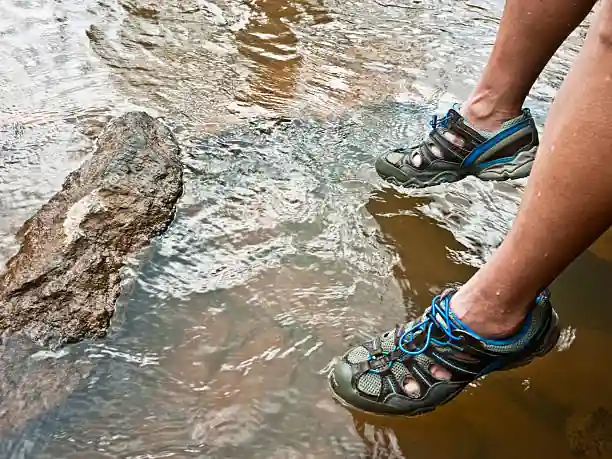
Honestly, picking the right pair isn’t as simple as scrolling through a few reviews on Reddit and clicking “buy.” The best water shoes for hiking aren’t just about how they look — they’re about how they perform when you’re knee-deep in the Virgin River or scrambling over slick boulders in Grand Canyon side canyons. There’s a bit of science… and a bit of personal preference too.
Let’s break it down.
a. Traction & Grip
Traction is probably the first thing you’ll notice — or miss — when you hit your first slippery slope. Rubber soles with deep lug patterns make a huge difference, especially in wet conditions. Look for slip-resistant soles or aggressive outsoles with textured treads that actually bite into wet terrain.
Some shoes like the Salomon Tech Amphibian or the KEEN Newport are known for their tough grip. They’re built to perform on everything from smooth river rocks to sandy trailheads in Southern Utah. Not all shoes can say that.
Oh, and don’t forget about rubber outsoles with multidirectional lugs… sounds technical, but it’s basically a way to keep your footing when your path turns slick.
b. Comfort & Fit
You’ll be walking. A lot. Sometimes hours. Across varying terrain. So comfort? Yeah, kind of a big deal.
Cushioned midsoles, water-resistant foam, or even minimalist designs with open-cell padding can make or break the day. Many options have adjustable straps, like Velcro or quick laces, so you can tighten them up once you’re wet — because things shift.
Try on a few. Walk around your house. (Or the yard, if you’re brave.) The best men’s water shoes for hiking often come in half sizes or wide fits — and sizing, surprisingly, can run a little weird. So double-check the Shoe Size guide before buying. For women, the Xtratuf Women’s Kiata Drift Sneaker is a good example of cushioned support without that bulky feel.
c. Drainage & Breathability
This might sound obvious, but… if the water can’t leave your shoe, what’s the point?
Look for shoes with drainage holes, mesh uppers, or built-in drainage systems — not just one tiny hole at the bottom that clogs with mud. Some shoes (like the Columbia Drainmaker IV) combine quick-dry materials with wide mesh panels that shed water fast and keep your feet cooler during long, humid hikes.
Pro tip? If you’re going into cold water — like say, the Colorado River or even parts of Northern Vietnam — pair your shoes with neoprene socks or even Sealskinz waterproof hiking socks. It’s a weird combo, but it works surprisingly well.
d. Durability & Build Quality
Water hikes are not gentle. Sharp rocks, constant friction, wet/dry cycles… they wear down shoes fast.
That’s where details matter. Look for reinforced stitching, tough toe protection, and abrasion-resistant materials. Shoes like the Merrell All Out Blaze Sieve or Teva Hydratek CT hold up well across seasons and surfaces. Some even swear by Chota Caneyforks for more hardcore canyon explorations.
You’re going to want something that survives both the trail and whatever comes after — maybe a day drying by the fire or stuffed into a backpack on your way to another adventure.
e. Weight & Flexibility
Let’s be real — no one wants bricks on their feet.
Lightweight designs are essential, especially if you’re hiking long distances or doing a lot of crossing rivers. Look into minimalist trail runners or barefoot-style shoes like Xero Aqua X Sport. They’re flexible, breathable, and some weigh less than your water bottle. That said… you give up some protection with that freedom.
If you’re heading to tougher terrain (like Death Hollow or slippery volcanic rocks in Hawaii), consider a more rugged model. A bit of extra weight might actually be worth the added grip and durability.
f. Versatility & Style
Most people don’t want to pack a second pair of shoes just for water. That’s where amphibious footwear shines.
You’ll find models that double as sneakers, sandals, or even casual shoes. Great for hopping from trail to restaurant — or from kayaking to cruise deck. The best ultralight water shoes for hiking often balance form and function without screaming “I just hiked through a swamp.”
And for families? Plenty of best kids water shoes for hiking now come in sporty, fun colors that still deliver on traction and comfort. (Plus, easier to convince them to wear them.)
III. Quick Comparison Table (For When You Just Want the Facts)
Okay, let’s say you don’t want to scroll through a dozen detailed reviews (even though… maybe do that eventually). Sometimes you just want the short version — the “what’s good for what” cheat sheet. So here’s a simple breakdown of some of the best water shoes for hiking — including picks for women, men, kids, and even those trail-to-water hybrids everyone’s raving about.
| Brand / Model | Best For | Weight | Price Range | Pros | Cons |
|---|---|---|---|---|---|
| Merrell All Out Blaze Sieve | All-around hiking + stream crossings | ~1.5 lbs | $$$ | Vibram soles, durable leather + neoprene, great for wet conditions | Slightly bulky, not great for minimalist packers |
| KEEN Newport H2 | Rugged terrain & waterfall trails | ~1.2 lbs | $$$ | Closed toe, solid grip, breathable mesh uppers | May feel clunky for beach hikes |
| Columbia Drainmaker IV | Sneaker-style adventures | ~1 lb | $$ | Lightweight, stylish, solid drainage system | Limited arch support |
| Astral TR1 Mesh | Eco-conscious & lightweight use | ~0.9 lbs | $$$ | Sustainable build, breathable, trail-ready grip | Less protection on rocky trails |
| Salomon Tech Amphib 4 | Versatile trail + water hybrid | ~0.85 lbs | $$$ | Sleek design, anti-slip outsoles, quick laces | Narrow fit, not ideal for wide feet |
| Xero Aqua X Sport | Barefoot-style & ultralight travel | ~0.6 lbs | $$ | Flexible, minimalist, good grip | Little cushioning, not for long rocky hikes |
| Crocs Swiftwater Mesh Sandal | Budget & casual river walks | ~0.8 lbs | $ | Affordable, surprisingly grippy, breathable mesh | Not super supportive, better for easy hikes |
| Body Glove 3T Barefoot Max | Water agility & unique design | ~0.7 lbs | $$ | Toe-shoe style, snug fit, dries fast | Takes getting used to, limited cushioning |
| Chaco Odyssey Sandal | Maximum ankle support | ~1.3 lbs | $$$ | Strong arch, adjustable straps, tough build | On the heavier side |
| Teva Terra Fi 5 Universal | Desert river trails + hot climates | ~1.1 lbs | $$$ | Durable outsole, soft water-resistant foam footbed | Velcro wears over time |
| Vivobarefoot Ultra III | Travel-ready packability | ~0.5 lbs | $$$ | Flexible, eco-friendly, dries fast | Minimal support, better for light use |
| Northside Brille II | Family outings + theme parks | ~0.9 lbs | $ | Simple design, good for kids, budget-friendly | Not ideal for intense trails |
Pro tip: If you’re hiking The Narrows, something with closed-toe protection like the KEEN Newport or Merrell Blaze Sieve is essential. Slippery rocks, strong current… you’ll be glad you didn’t go minimalist.
And yep, these are just the highlights. We’ll go deeper in the next section — each shoe gets its moment with full pros, cons, standout features, and where it shines. Because sometimes the “best” really depends on where you’re headed — Zion Canyon, Coyote Gulch, or maybe just a lakeside trail on your Alaska cruise stopover.
The 12 Best Water Shoes for Hiking
1. Merrell All Out Blaze Sieve
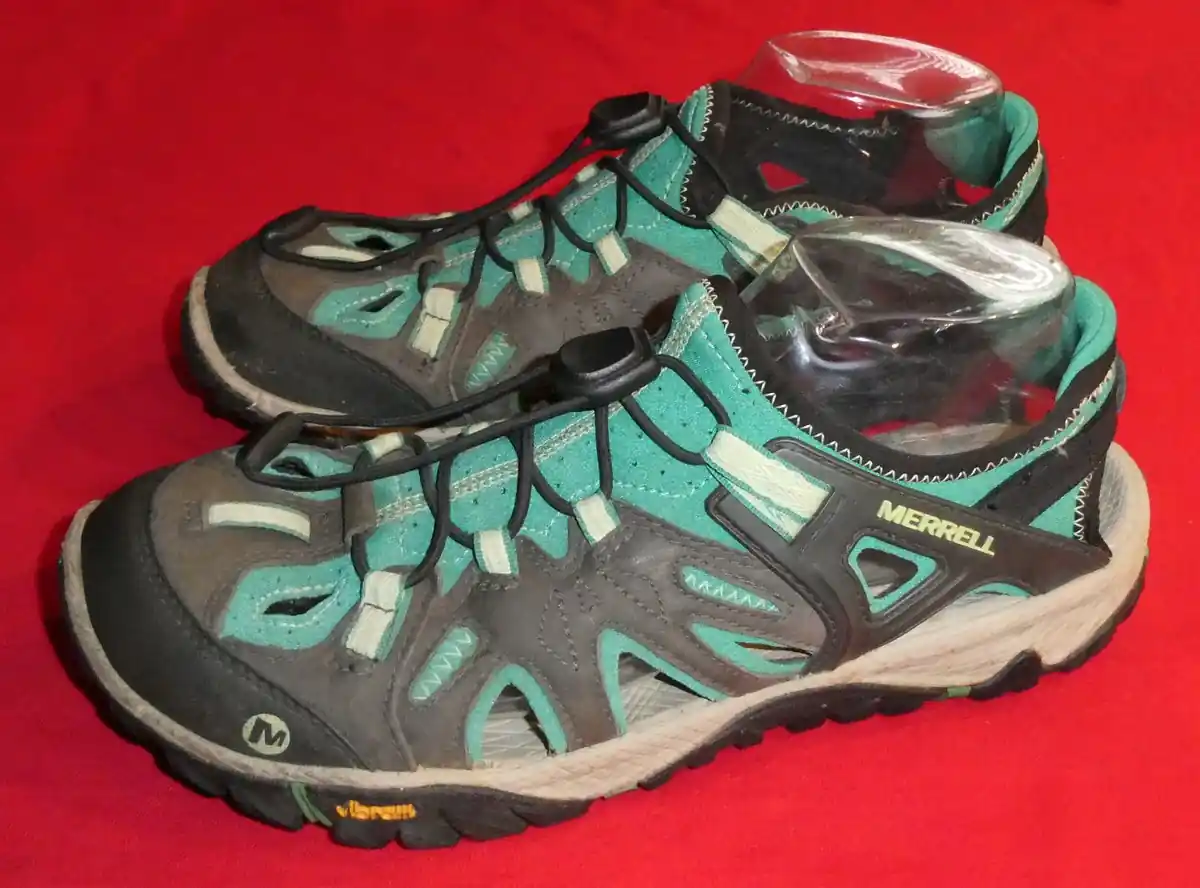
Best Overall Pick
This one’s a powerhouse. The Merrell All Out Blaze Sieve isn’t just a water shoe — it’s a hiking shoe that just happens to thrive in water. With a Vibram outsole, neoprene lining, and water-friendly leather, it feels tough without being bulky.
You’ll notice how quickly it dries. The drainage system is solid — not flashy, just functional. If you’re wading through the Virgin River or making your way down Paria Canyon, it’ll hold up. No awkward sloshing, no weird rubbing. Just steady steps.
It’s not ultralight like minimalist trail runners, but honestly? That’s what makes it dependable. The thick sole gives you cushion and protection, especially when crossing rivers with hidden rocks or broken terrain.
Recommended Use: Waterfall hikes, rocky riverbeds, canyon explorations
Pairs Well With: Wool socks or Sealskinz if temps drop
2. KEEN Newport H2 Sandal

Best for Rugged Trails
The KEEN Newport H2 is one of those classic picks that keeps showing up on best water shoes for hiking Reddit threads — and for good reason. It’s sturdy. It’s got toe protection. And the rubber soles grip like glue even on mossy boulders.
There’s a reason hikers wear these in places like Death Hollow or the wetter sections of Zion Canyon National Park. The closed-toe design gives you a little extra peace of mind — no stubbed toes when you misjudge a rock hop.
The quick-dry material and mesh uppers help it breathe in hot conditions, and the Velcro-style straps keep it snug without needing constant adjustment. If you’re packing light or want one shoe for trail and town, this one’s a contender.
Recommended Use: Grand Canyon creek hikes, waterfall trails, general aquatic adventures
Pairs Well With: Neoprene socks for cooler water, KT tape if you tend to blister
3. Columbia Drainmaker IV
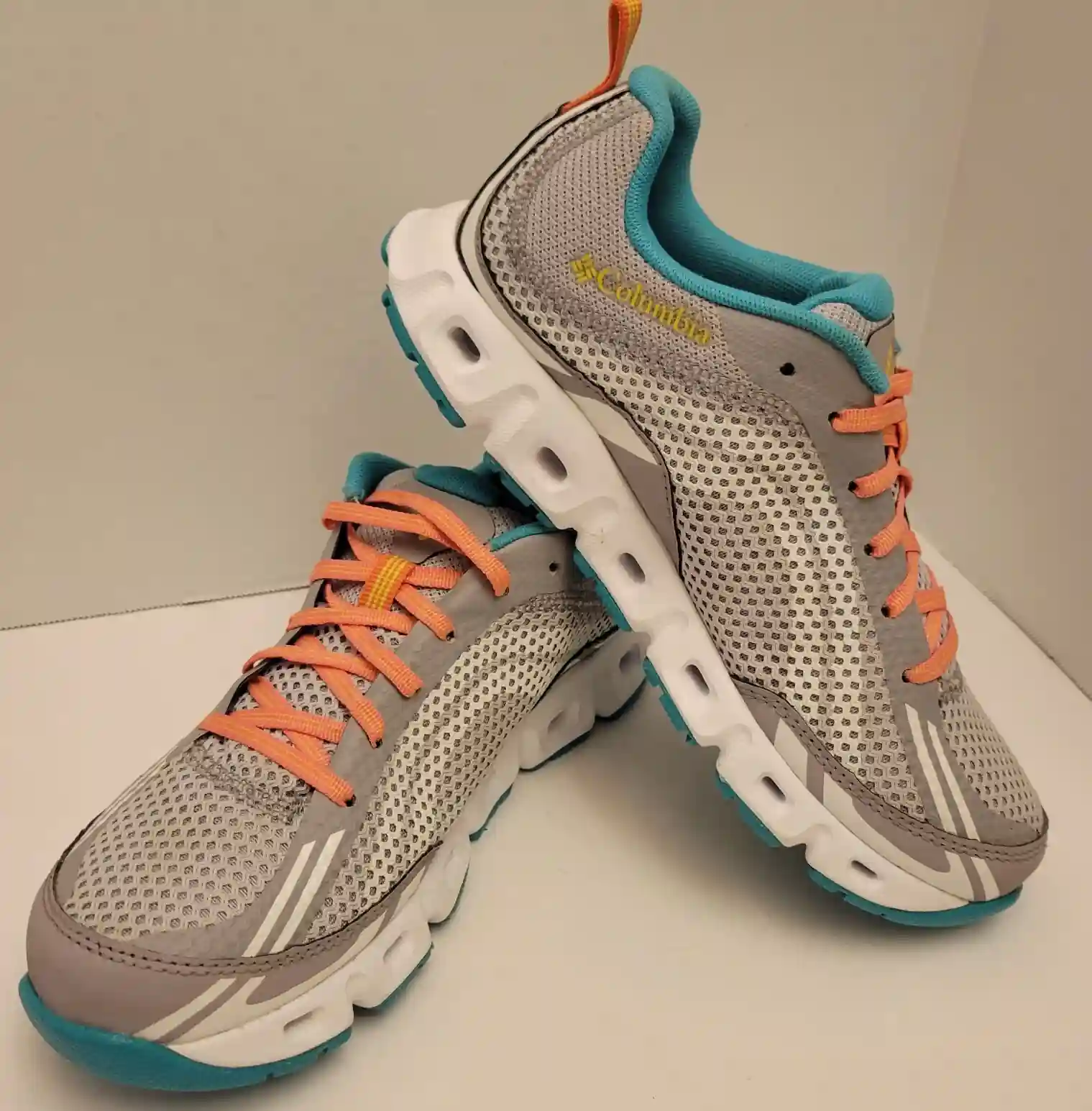
Best Sneaker-Style Hybrid
If you prefer the look and feel of a sneaker but want it to behave like a water shoe, the Drainmaker IV is a sweet spot. It’s got a quick-dry mesh upper, lightweight construction, and enough traction to feel confident over wet terrain.
Think river cruising or humid hikes where your feet are gonna get wet but you still want that sneaker-style bounce. It’s great for casual outdoor activities — like beach walks, creekside trails, or shore excursions on a cruise.
Is it built for extreme canyoneering? Probably not. But if your water hikes are more laid-back — or you’re mixing in some retail stops or lunch breaks — it’ll blend right in.
Recommended Use: Beach hikes, cruise excursions, light stream crossings
Pairs Well With: Nylon socks for quick comfort, casual gear for all-day wear
4. Astral TR1 Mesh
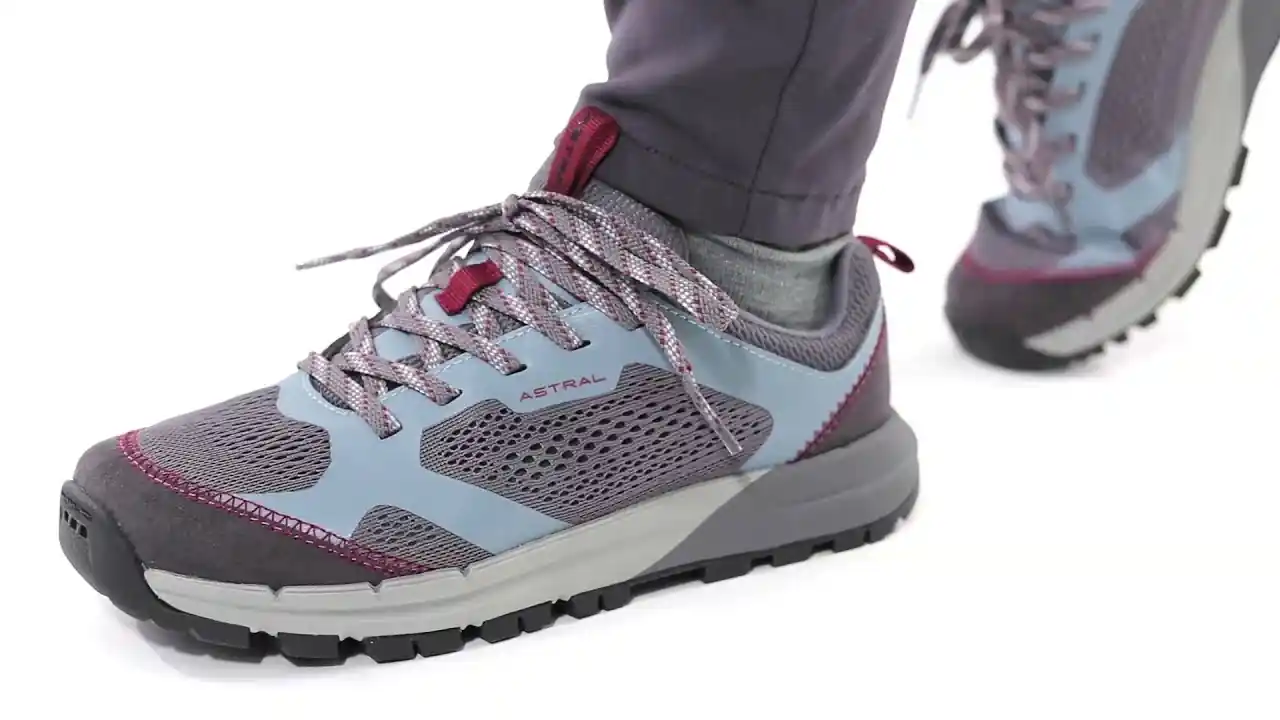
Best Eco-Friendly Performance
There’s something about Astral’s vibe that just feels thoughtful. Maybe it’s the sustainable materials, maybe it’s the barely-there feel, or maybe it’s just how dry your feet feel ten minutes after a full dunk. Either way, the TR1 Mesh delivers.
It’s ultralight — bordering on barefoot-style — but still has enough support to handle moderate terrain. The open-cell foam padding helps shed water fast, and the rubber outsoles provide just enough grip for mixed surfaces.
You probably wouldn’t wear these through Coyote Gulch in peak flood season, but for trail runners or eco-conscious hikers looking for versatility, it’s a win. Also: they look pretty good with shorts.
Recommended Use: Travel-friendly hikes, warm-weather trails, eco-focused trips
Pairs Well With: Inov-8 All-Terrain socks, ultralight gear setups
5. Salomon Tech Amphib 4
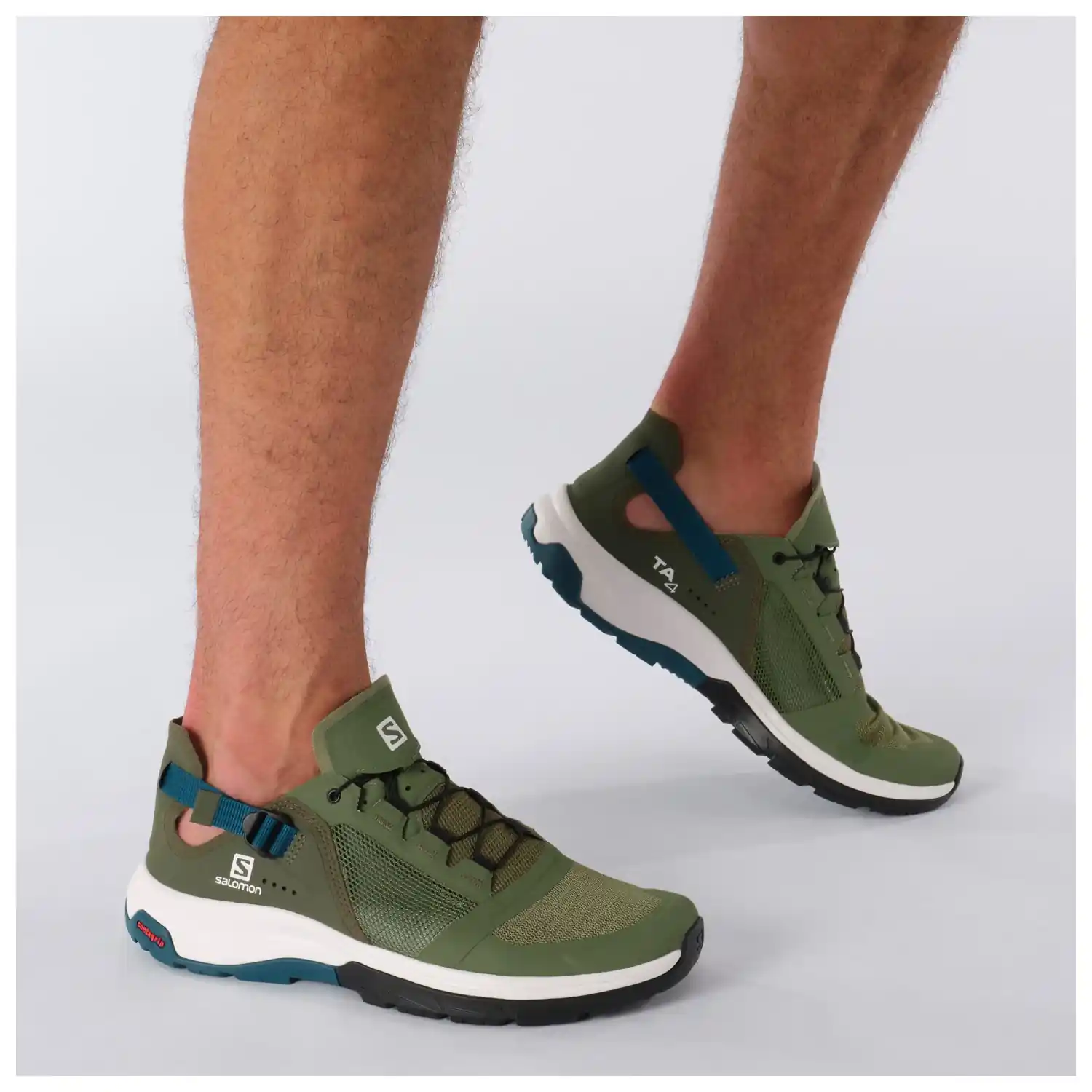
Best for Trail-to-Water Transitions
If your hike includes a little bit of everything — dry trail, wet crossings, dusty climbs — the Salomon Tech Amphibian series is pretty much made for you. The Amphib 4 looks like a low-profile trail runner but acts like a hybrid beast.
It’s sleek and supportive. The quick laces make for easy adjustments mid-hike, and the drainage holes keep your feet from swimming after every creek crossing. The outsole grip holds up surprisingly well even on slick river rocks.
A heads-up: the fit can run snug, especially if you’ve got wider feet. But for those who love Salomon’s style and performance, this one’s a favorite for a reason.
Recommended Use: Mixed terrain, longer treks, The Narrows in Zion
Pairs Well With: Sealskinz socks if water’s cold, water filter in your pack
6. Xero Shoes Aqua X Sport
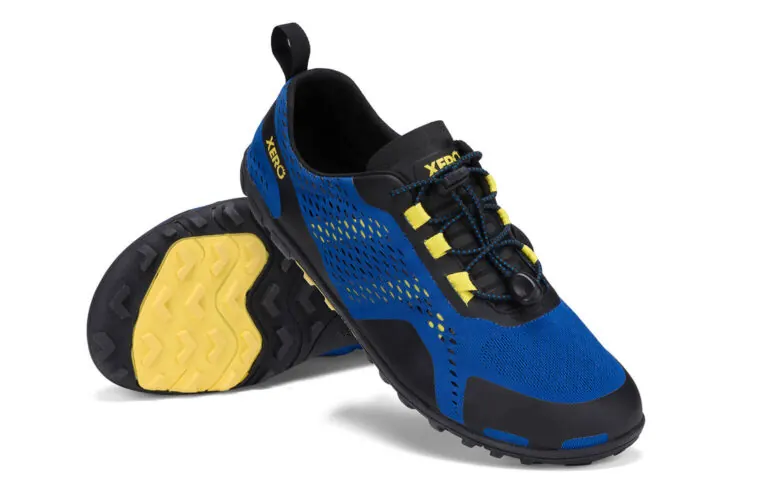
Best Barefoot-Style Option
This one’s for the minimalists — the hikers who ditch anything that doesn’t absolutely need to be in their pack. If that sounds like you, the Aqua X Sport from Xero might hit the sweet spot.
It’s built like a barefoot trail runner, meaning zero drop, ultra-thin sole, and max ground feel. Great for agility, not great if you’re prone to sore arches or need cushioning. But it grips… surprisingly well. The rubber soles hug wet rocks, and the quick-dry mesh lets water escape almost instantly.
The shoe itself weighs next to nothing — like, seriously, lighter than a dry pair of wool socks. If you’re tackling hot beach hikes, desert creeks, or lightweight canyon explorations, this is a super efficient choice.
Recommended Use: Light trails, hot climates, weight-conscious hikers
Pairs Well With: Neoprene liner socks for cold creeks, minimalist pack setups
7. Crocs Swiftwater Mesh Sandal
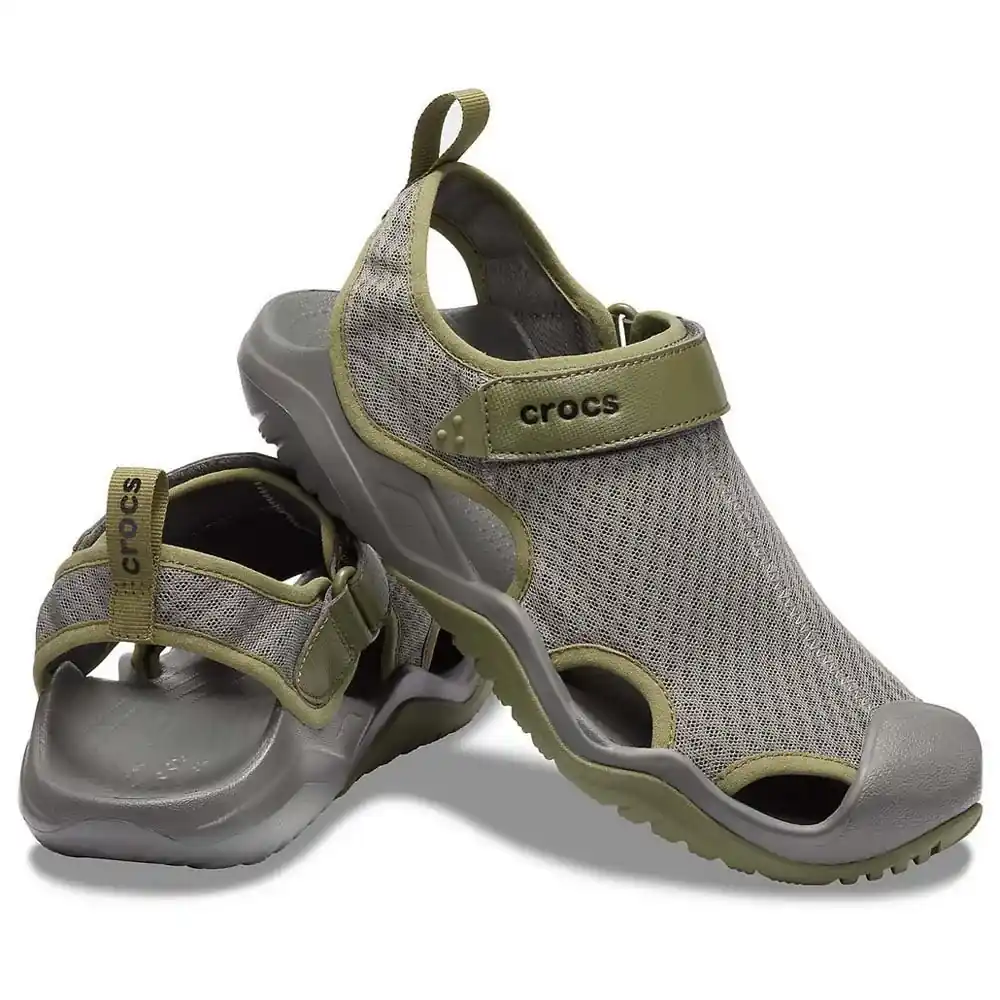
Best Budget Pick (That Actually Performs)
You’re probably raising an eyebrow right now. Crocs? For hiking? Look, we didn’t expect it either. But the Swiftwater Mesh Sandal is one of those weirdly solid picks for casual river hikes, cruise stop excursions, and anything low-intensity but wet.
It has quick-dry mesh uppers, a flexible body, and a pretty grippy sole for something that… well, looks like a leisure shoe. The Velcro-style straps keep things snug, and the rubber outsoles hold up better than you’d think on slippery riverbeds.
Now, would we wear them in Coyote Gulch? Probably not. But for short hikes near Princess Cays or even walking around wet decks on an Oceania Cruises trip, they hold their own.
Recommended Use: Beach walks, light hikes, water parks
Pairs Well With: Casual outfits, sandals skeptics looking to convert
8. Body Glove 3T Barefoot Max
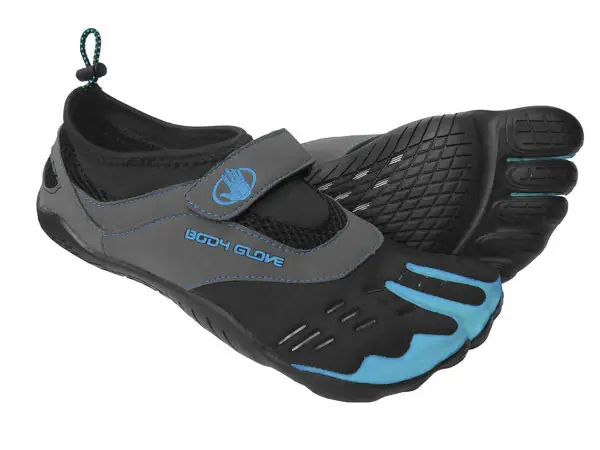
Best Toe-Shoe Style for Water Agility
Yeah, they look weird. Like, mutant frog-feet weird. But hear me out: the Body Glove 3T Barefoot Max is oddly brilliant for certain kinds of hikes — especially when you need water agility more than trail durability.
The separated toe design (just three toes, not five) gives you more control and grip on uneven, wet terrain. It’s snug, stretchy, and almost feels like a sock — with drainage holes and a flexible rubber sole that actually holds traction.
Would I wear these for long miles? Eh, probably not. But if you’re scrambling around tide pools, creek beds, or navigating kayak landings on a river float, they feel kind of… ninja-like. Just be ready for the stares.
Recommended Use: Water agility, kayaking, short bursts of activity
Pairs Well With: Water-resistant dry bags, sense of adventure
9. Chaco Odyssey Sandal
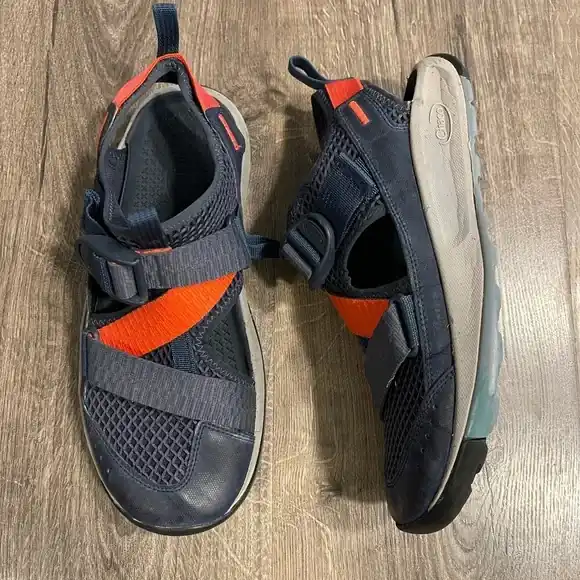
Best for Ankle Support
Not every water hike is a chill stroll through a shaded stream. Some involve uneven terrain, side scrambles, and the occasional leap over logs or onto slick ledges. For those moments, ankle support matters — and the Chaco Odyssey delivers.
This shoe-sandal hybrid offers a rugged outsole, secure heel wrap, and thick Velcro straps that hug your feet like a trail shoe. It drains decently, breathes well enough, and stays put even in fast-flowing water — like sections of the Colorado River or areas near Icy Strait Point on more adventurous cruise excursions.
If you’ve got weak ankles or just want to feel locked in, this pick’s a reliable go-to. Also works surprisingly well for hiking in Southern Utah — lots of support without full boot bulk.
Recommended Use: Moderate-to-difficult trails, support-focused hikers
Pairs Well With: KT tape, gaiters if you’re expecting sand
10. Teva Terra Fi 5 Universal
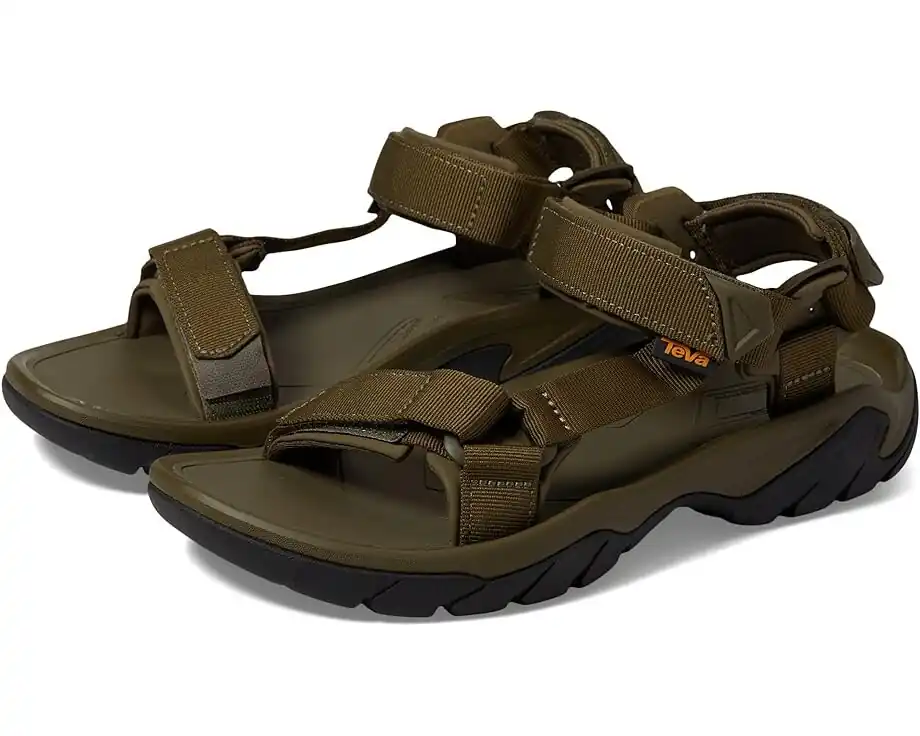
Best for Desert Rivers and Hot Terrain
Hot sand, red rock, shallow rivers… if you’re planning to hike through places like the Grand Staircase or along sun-baked stretches of the Virgin River, the Teva Terra Fi 5 is a strong contender.
The water-resistant foam footbed is surprisingly plush, even hours in. And the durable outsole handles slick and dry conditions equally well — perfect for transitioning between canyon floors and water crossings. The straps? Adjustable and comfy, even when wet.
Some folks say the Velcro wears down over time. Maybe. But the shoe’s comfort in hot, wet conditions makes up for it — especially if you’re pairing them with breathable socks like the Inov-8 All-Terrain ones for longer treks.
Recommended Use: Arid riverbeds, high-heat hikes, sunny creek days
Pairs Well With: Quick-dry apparel, ultralight water filter
11. Vivobarefoot Ultra III
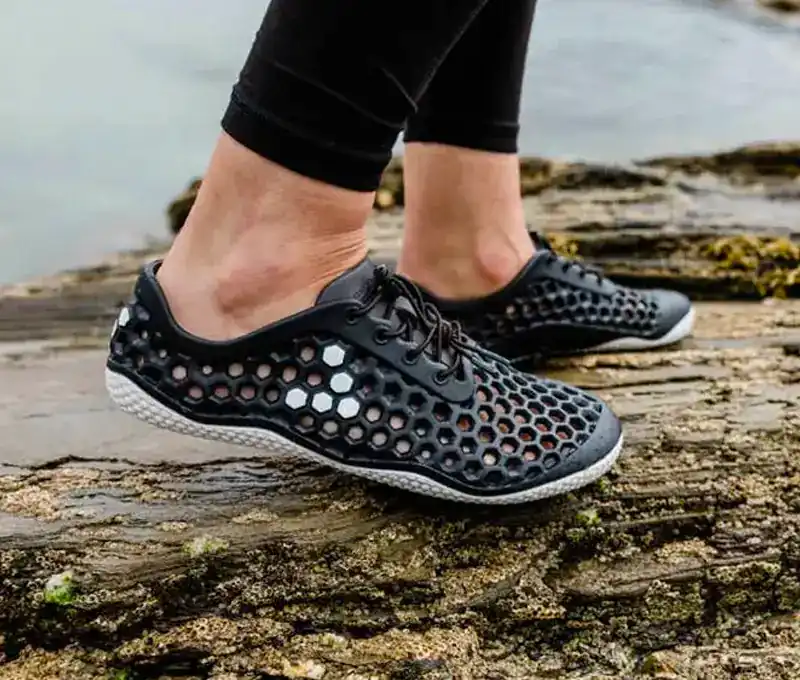
Eco-Friendly Minimalism for Lightweight Exploration
If you’re the type of hiker who prefers that “barefoot” feel — closer to the ground, minimal bulk, total flexibility — the Vivobarefoot Ultra III might just become your go-to pair. It’s not a traditional rugged water hiking shoe, but for travelers who prioritize packability, sustainability, and versatility, this one stands out.
The breathable hexagonal mesh upper keeps things light and airy, even on sweaty jungle treks or low-impact river walks. The sole? Thin but surprisingly grippy, giving you enough traction for slippery stones or mossy paths. It’s also made with Bloom foam — derived from algae — making it one of the most eco-conscious options on the market.
Keep in mind: it’s not built for heavy load hikes or jagged terrain. But if you’re island hopping, road-tripping, or exploring warm, wet environments on foot, this shoe packs small and performs big.
Recommended Use: Casual hikes, kayaking trips, travel days with water crossings
Pairs Well With: Quick-dry shorts, minimalist daypack, eco sunscreen
12. Northside Brille II

Best Budget Pick for Water Parks and Easy Trails
Not every adventure calls for high-performance footwear. Sometimes, you just need a comfy, affordable pair of water hiking shoes to get you through creek-side strolls, splash pads, or that slippery boardwalk. That’s where the Northside Brille II shines.
It’s simple. The neoprene upper fits snugly and comfortably, and the drawstring toggle keeps things secure. The rubber outsole handles basic terrain surprisingly well — think wet sidewalks, light forest trails, or those half-mile treks to hidden waterfalls.
You won’t get the support or longevity of higher-end models, sure. But if you’re shopping for water shoes for kids, or need a backup pair for family vacations, it’s a solid pick that won’t blow your budget.
Recommended Use: Water parks, resort hikes, family trips
Pairs Well With: SPF shirts, collapsible water bottles, budget-friendly travel plans
How to Care for Your Water Hiking Shoes
Extend Their Life & Keep Them Fresh
A good pair of water hiking shoes can take a beating — from muddy trails to saltwater sloshes — but they still need some love. Here’s how to keep your trail-and-water footwear in top shape:
- Rinse After Use: Especially if you’ve been in saltwater or silty rivers. A quick hose-off helps prevent buildup and odor.
- Air Dry Completely: Avoid direct sunlight or tossing them into a dryer. Let them breathe naturally in a well-ventilated space.
- Remove Insoles (If Possible): Let them dry separately to avoid mildew and keep that inner freshness.
- Brush Off Gunk: Use a soft brush to remove dried mud or sand from mesh panels and treads.
- Deodorize Naturally: Baking soda or a quick spritz of diluted vinegar works wonders for keeping stink at bay — especially for closed-toe aqua shoes.
Pro tip? Rotate between two pairs if you’re on a longer trip or hiking daily. This helps them dry fully and keeps your feet happier.
Final Words
The outdoors doesn’t always give you a dry, flat path — and that’s part of the fun. Whether you’re wading through streams in Zion or crossing rivers on a jungle trail, the best water shoes for hiking keep your footing solid and your feet surprisingly comfortable. They’re not just about getting wet; they’re about staying confident when things get slippery, muddy, or unpredictable.
From lightweight barefoot-style shoes to rugged sandals that could out-hike some boots, there’s no single answer for everyone. But one thing’s clear: if your next adventure involves both trails and water, investing in the best water shoes for hiking will make the journey a whole lot smoother.
Take your time. Think about where you’re headed, what kind of terrain you’ll face, and what feels good on your feet. Then choose the pair that’ll carry you there — splash, step, and all.
Frequently Asked Questions
1. Are water hiking shoes good for dry trails too?
Yes — many modern water hiking shoes offer solid grip and comfort on dry, dusty trails too. They’re not just for creek crossings.
2. Can I wear them without socks?
Definitely. Most are built for sockless wear, though lightweight water-friendly socks can help prevent blisters on longer treks.
3. How are they different from regular hiking shoes?
Water hiking shoes are made with quick-drying materials, drainage ports, and better water traction. Think: hiking shoes that don’t mind getting soaked.
4. Are aqua hiking shoes slip-resistant?
The best ones are. Look for rubber outsoles with multi-directional lugs or siped soles — these improve traction on wet rocks and muddy slopes.
5. Can I use them for kayaking or paddleboarding?
Absolutely. Many are designed for multi-sport use — hiking, paddling, canyoning, even travel in humid climates.
6. How should they fit?
Snug but not tight. You want enough security that they won’t slide off in water, but also space for your toes to move.
7. Are these good for travel?
Yes. Most water trail shoes are lightweight, packable, and dry fast — ideal for travel backpacks or carry-on bags.
8. What materials are best?
Look for mesh, neoprene, or knit uppers and rubber or EVA soles. Eco-friendly options like algae-based foams are a bonus.
9. Do water hiking shoes last long?
With regular care, yes. They might wear faster than leather boots on rugged terrain, but for mixed-use travel and trails, they hold up great.
10. Can I run in water hiking shoes?
Some minimalist models double as trail runners. But for consistent running, choose something with more cushioning and support.

